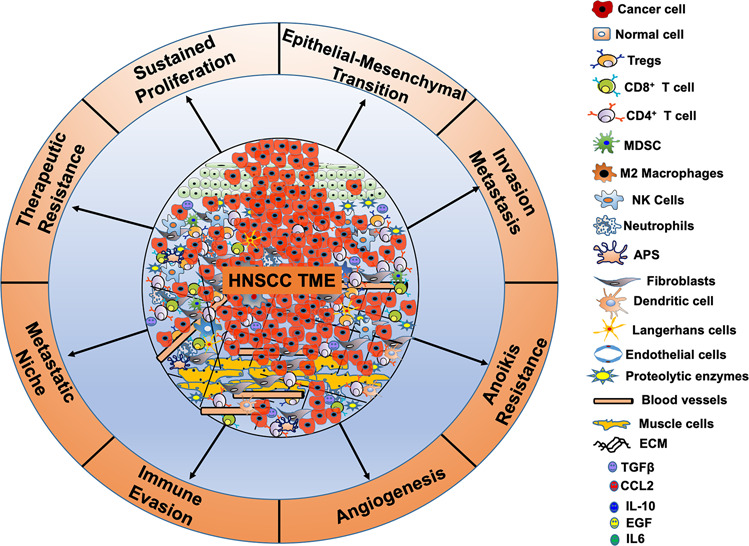Fig. 1.

Head and neck squamous cell carcinoma (HNSCC) TME is a complex ecosystem. HNSCC TME is a complex ecosystem consisting of a fabricated network of tumor cells surrounded by non-tumor cells, including cancer-associated fibroblasts (CAFs), endothelial cells (EC), adipocytes, neuroendocrine cells, blood and lymphatic vascular cells, muscle cells, infiltrating immune cells ((T cells, B cells, natural killer cells (NK cells), neutrophils, dendritic cells (DC), Langerhans cells (LCs), macrophages, and myeloid-derived suppressor cells (MDSCs)]. In addition, stromal components, including extracellular matrix (ECM) proteins (collagen, fibronectin, elastin, laminin, and tenascin), intermediate metabolites, nutrients, hormones, growth factors, etc. are the crucial components of HNSCC TME. The complex cross talk between the tumor and the stromal components regulates cell growth, epithelial–mesenchymal transition (EMT), invasion and metastasis, anoikis resistance, angiogenesis, metastatic niche, immune surveillance, and therapeutic resistance making HNSCC tumors very aggressive
